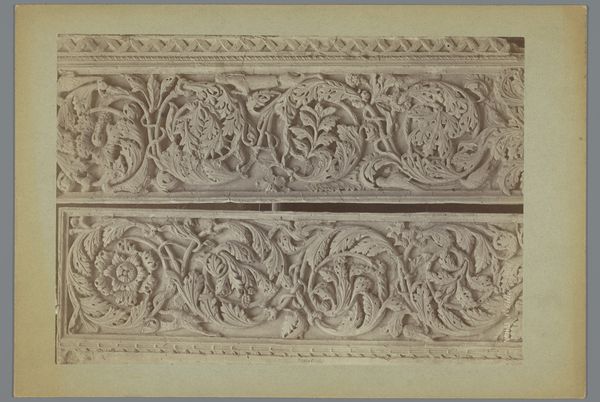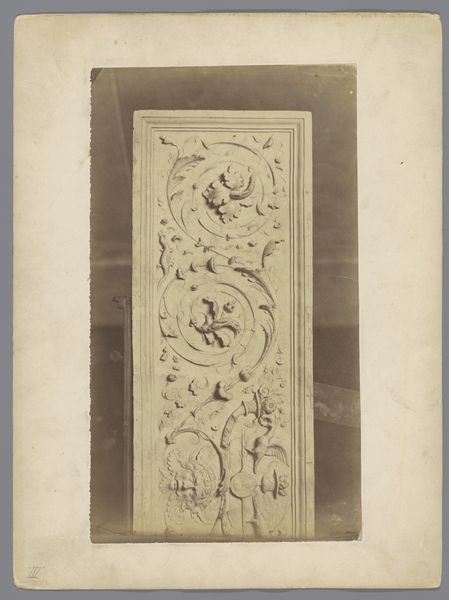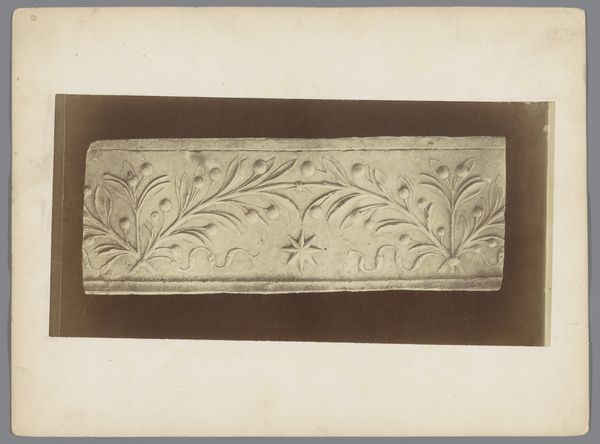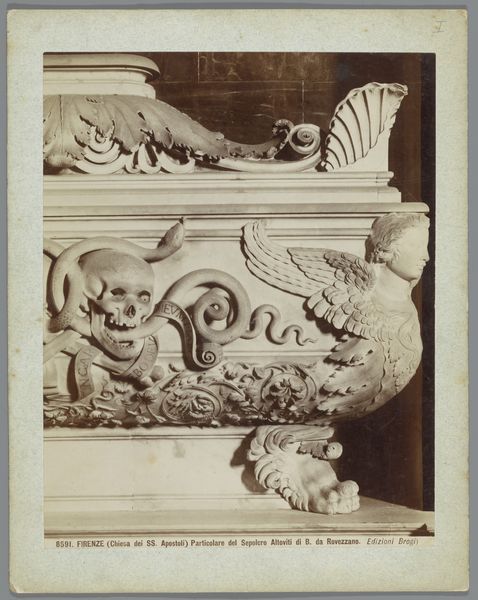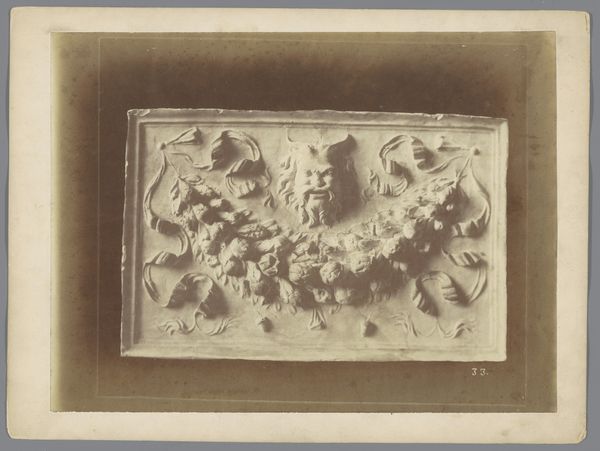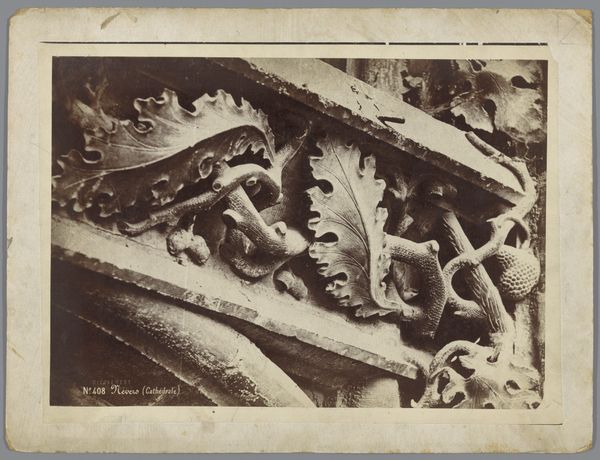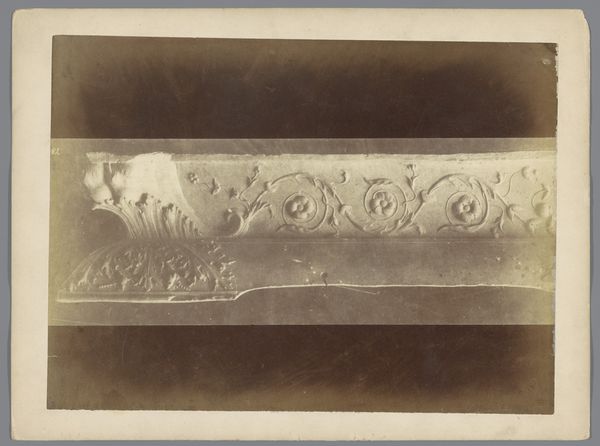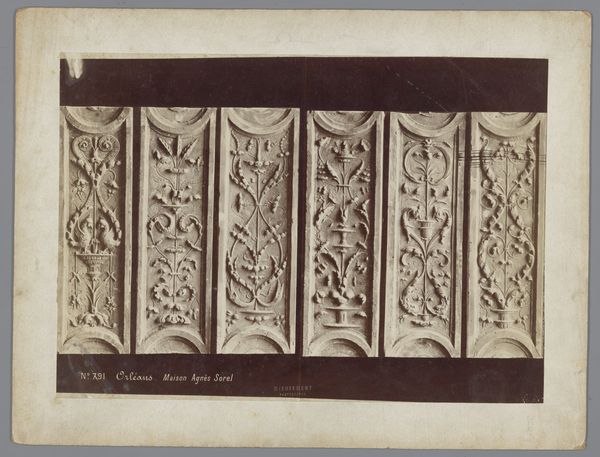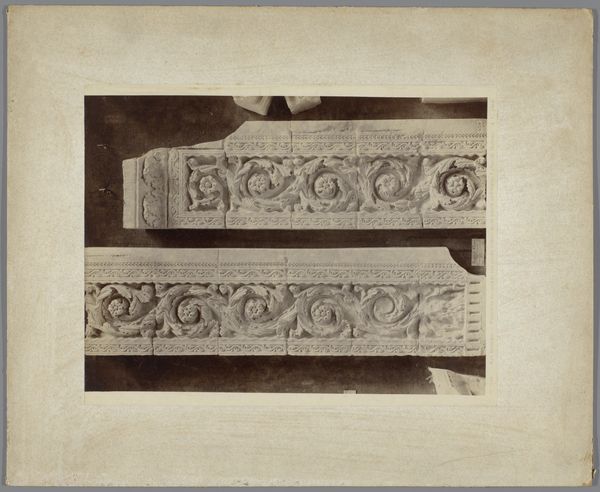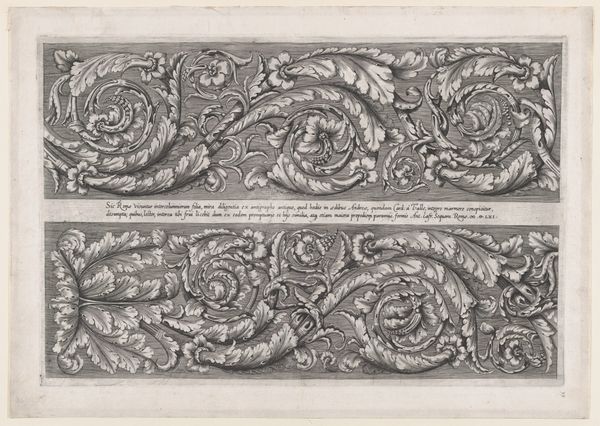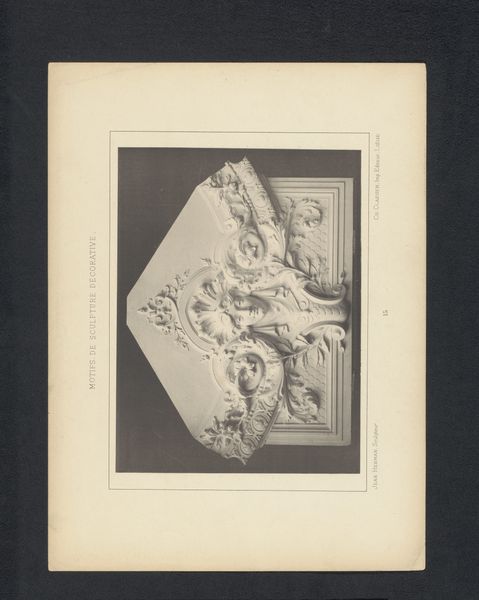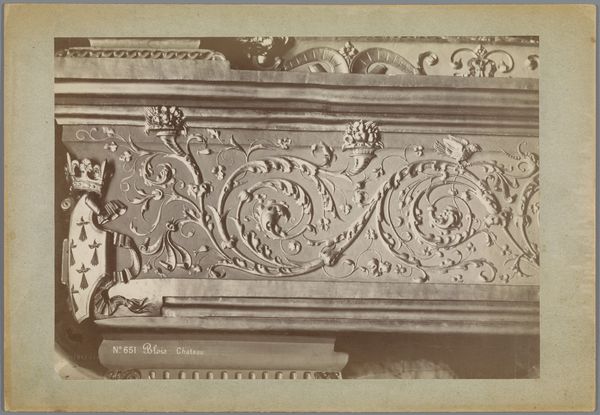
relief, photography, sculpture
#
relief
#
photography
#
fruit
#
coloured pencil
#
sculpture
Dimensions: height 266 mm, width 189 mm
Copyright: Rijks Museum: Open Domain
Curator: This photograph captures two reliefs by Gustave Eugène Chauffourier, entitled "Twee reliëfs met vogels en fruit", created sometime between 1875 and 1900. Editor: They have such a tranquil, almost domestic quality. The details are lovely – little birds, bunches of fruit – captured in what appears to be a monochromatic palette. Curator: Yes, although the photo is monochromatic, we know the reliefs are sculptures. The play of light and shadow across the carvings indicates a high level of craftsmanship, doesn't it? One might ponder their function, their placement, and whether Chauffourier, whose biography has proven difficult to assemble, conceived them as a study for something grander, or ends in themselves? Editor: Precisely. What materials were used, what would it be like to actually handle those pieces? I'm immediately thinking of late 19th-century domestic interiors – a bourgeois setting, perhaps? Were these reliefs meant for the masses, affordable adornments? Or were they a one-off commission, destined for some affluent parlor? Curator: That's exactly where my thoughts were headed as well! Considering the late 19th-century historical context, this interest in naturalism points toward larger cultural shifts regarding decorative objects and nature. Were they intended as a sort of “tamed wilderness”, bringing pastoral values indoors? And I am now wondering about the specific role of sculpture in these bourgeois homes – emblems of culture and cultivation? Editor: Right, emblems signifying class, access to material production. It's a curious paradox, representing nature in such an overtly constructed manner. Curator: It does speak volumes, I think. A tension of labor involved to depict 'simplicity'. Thanks, I feel this helped focus a point about artistic skill and consumption as being an upper class value. Editor: Yes, that interplay between "art" and commodity always interests me, a key aspect in viewing decorative reliefs within society's aesthetic values at that time.
Comments
No comments
Be the first to comment and join the conversation on the ultimate creative platform.

